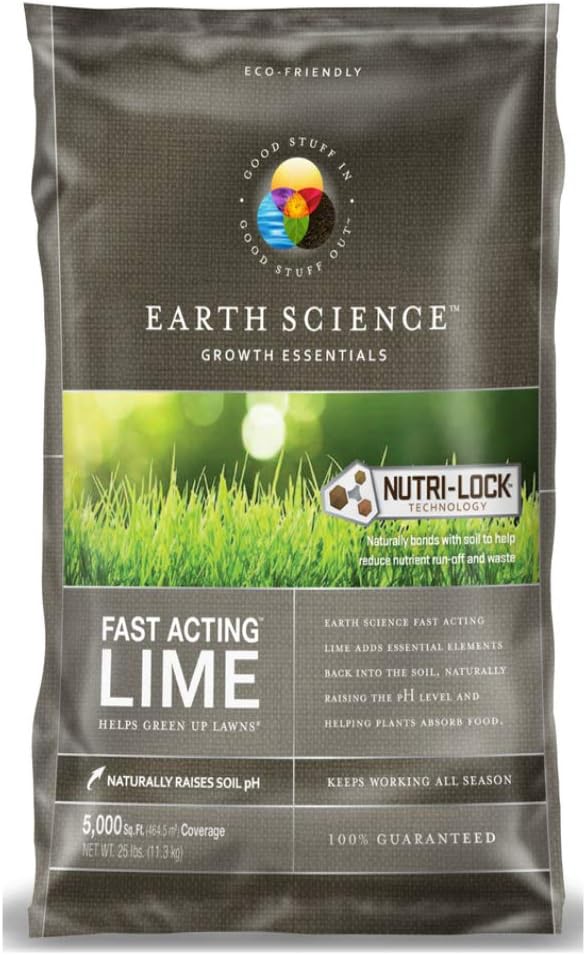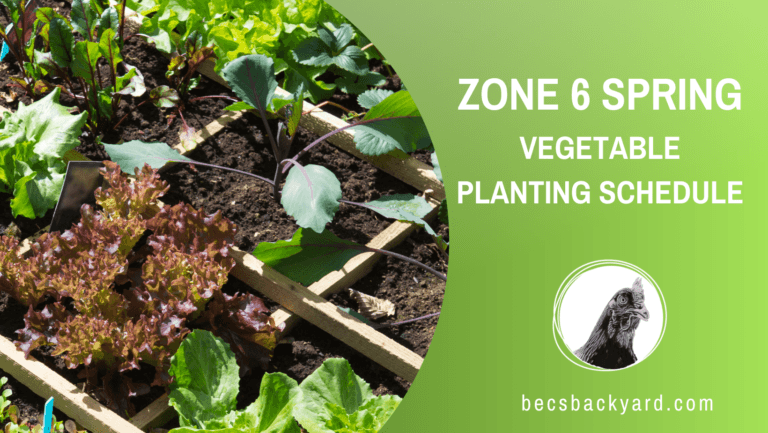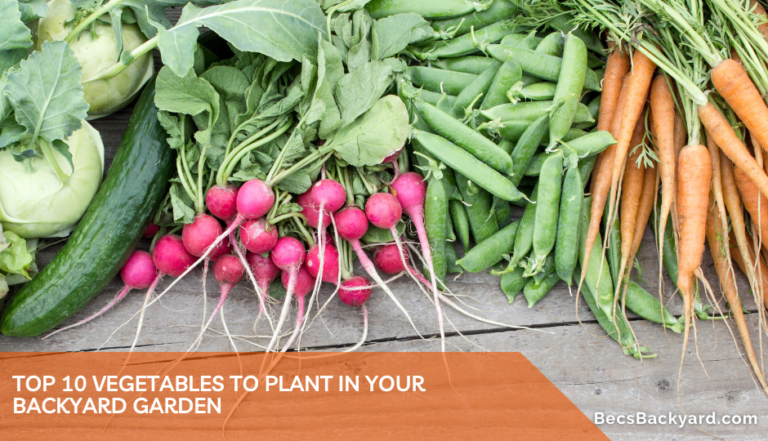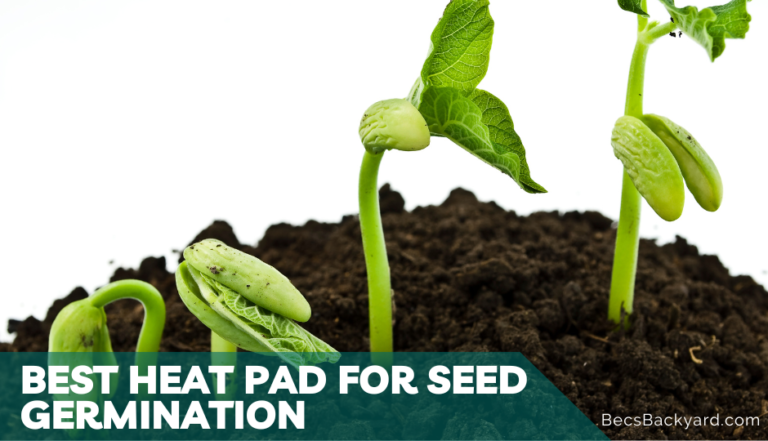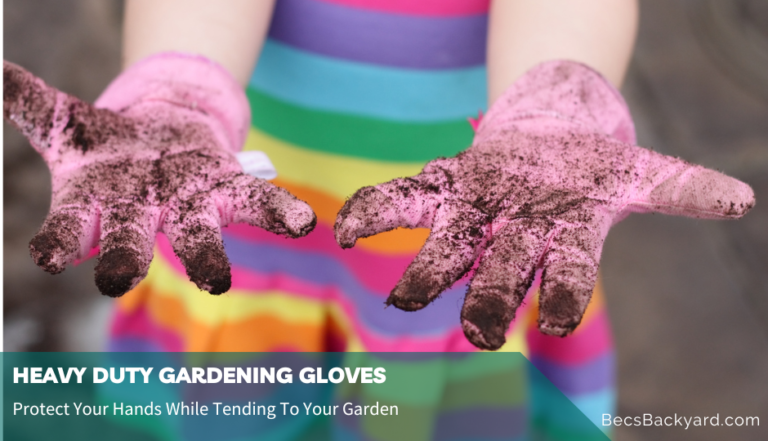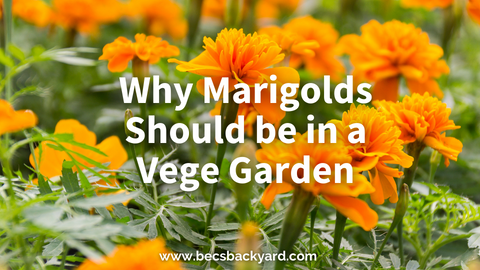How to Make Healthy Soil for a Vegetable Garden: A Beginner’s Guide
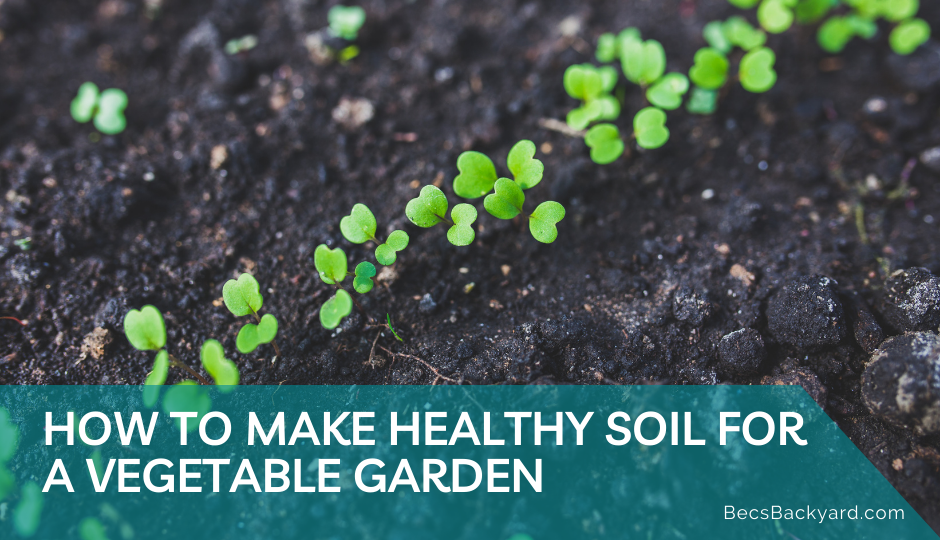
Growing a vegetable garden can be a rewarding experience, but it requires some effort and knowledge to achieve success. One of the most important aspects of growing vegetables is knowing how to make healthy soil for a vegetable garden. Soil is a living ecosystem that provides nutrients, water, and air to plants. However, not all soil is created equal. Some soils may lack essential nutrients, have poor drainage, or be too acidic or alkaline for vegetables to thrive.
To ensure your vegetable garden is healthy and productive, it’s important to amend your soil, to understand how to make healthy soil for a vegetable garden. Soil amendment is the process of adding organic or inorganic materials to soil to improve its physical and chemical properties. The goal is to create a soil environment that is rich in nutrients, has good drainage, and is well-aerated to support healthy plant growth. By amending your soil, you can create a fertile and healthy environment that will help your vegetables grow strong and produce abundant yields.

Soil Testing
Before amending your soil, it is essential to know the current state of your soil. Soil testing helps to determine the pH level, nutrient content, and texture of your soil. It is recommended to test your soil at least once a year, preferably in the early spring before planting.
pH Level
The pH level of your soil is a measure of its acidity or alkalinity. Most vegetables grow best in soil with a pH level between 6.0 and 7.0. If your soil’s pH is too high or too low, plants may not be able to access essential nutrients, resulting in stunted growth or poor yields.
You can adjust the pH level of your soil by adding amendments such as lime to raise the pH or sulfur to lower it. However, it is crucial to test your soil before adding any amendments to avoid overcorrecting the pH level.
Nutrient Content
Testing your soil for nutrient content helps determine the amount of nitrogen, phosphorus, and potassium present in the soil. These three nutrients are essential for plant growth and development.
If your soil is deficient in any of these nutrients, you can add organic fertilizers such as compost, aged manure, or bone meal to improve the soil’s nutrient content. However, it is essential to avoid over-fertilizing, as excess nutrients can lead to environmental pollution and plant damage.
Texture
Soil texture refers to the size of soil particles and their arrangement. Soil texture affects the soil’s ability to retain water and nutrients, as well as the ease of root penetration.
You can determine your soil texture by conducting a simple soil ribbon test. Take a handful of moist soil and squeeze it tightly in your hand. If the soil forms a ribbon that holds its shape, it is high in clay content. If the soil crumbles easily, it is sandy. If the soil forms a ribbon that breaks easily, it is loamy.
Knowing your soil texture helps you choose the right amendments to improve soil structure and fertility. For example, adding organic matter such as compost or peat moss can improve soil structure and water retention in sandy soils, while adding sand or perlite can improve drainage in clay soils.
In conclusion, soil testing is an essential step in amending your soil for a vegetable garden. Testing helps you determine the pH level, nutrient content, and texture of your soil, enabling you to choose the right amendments to improve soil fertility and structure.
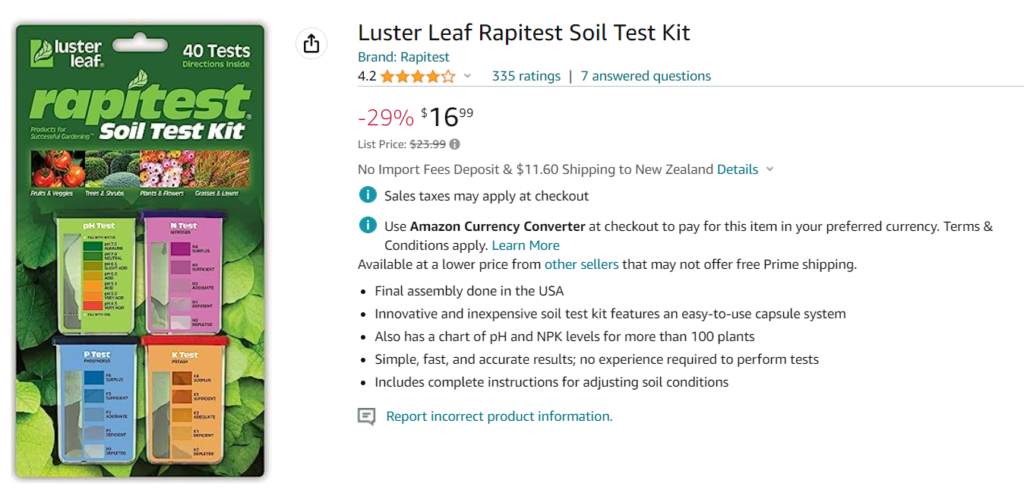
How to Make Healthy Soil : Amending Techniques
There are several techniques you can use to amend your soil for a nutrient-rich vegetable garden. Some of the most effective techniques include composting, cover cropping, and mulching.
Composting
Composting is a great way to add organic matter to your soil. Organic matter helps to improve soil structure, increase water retention, and provide nutrients to your plants. Composting is easy and can be done with kitchen scraps, yard waste, and other organic materials. You can either create a compost pile or use a compost bin. When the compost is ready, you can mix it into your soil to improve its quality.
Cover Cropping
Cover cropping is another effective technique for amending your soil. Cover crops are plants that are grown specifically to improve soil health. They are planted in the fall or winter and allowed to grow until the spring. Cover crops help to improve soil structure, increase organic matter, and provide nutrients to your plants. Some common cover crops include clover, rye, and vetch.
Mulching
Mulching is a technique that involves adding a layer of organic material to the surface of your soil. Mulch helps to retain moisture, suppress weeds, and regulate soil temperature. Some common mulching materials include straw, leaves, and grass clippings. When using mulch, be sure to keep it away from the stems of your plants to prevent rotting.
By using these techniques to amend your soil, you can create a nutrient-rich environment for your vegetable garden. Composting, cover cropping, and mulching are all easy and effective ways to improve the quality of your soil and promote healthy plant growth.
Soil Amendments
When it comes to growing vegetables, having healthy soil is essential. Soil amendments can help improve soil quality and provide the necessary nutrients for your plants to thrive. Here are some common soil amendments to consider for your vegetable garden:
Organic Matter
One of the most important soil amendments is organic matter. Adding organic matter to your soil can improve its structure, increase water retention, and provide nutrients for your plants. Some examples of organic matter include:
- Compost: Made from decomposed plant materials, compost is a great source of nutrients for your soil.
- Manure: Animal manure can be a good source of nitrogen and other nutrients, but it should be aged or composted before use to avoid burning your plants.
- Leaves: Shredded leaves can be added to your soil to improve its structure and provide nutrients.
Fertilizers
Fertilizers can provide your plants with the necessary nutrients for healthy growth. There are two main types of fertilizers: organic and synthetic. Organic fertilizers are made from natural materials, such as bone meal or fish emulsion, while synthetic fertilizers are made from chemical compounds. Both types can be effective, but organic fertilizers are generally preferred for vegetable gardens.
When choosing a fertilizer, it’s important to consider the nutrient content. Fertilizers are labeled with three numbers that represent the percentage of nitrogen, phosphorus, and potassium they contain. For example, a fertilizer labeled 10-10-10 contains 10% nitrogen, 10% phosphorus, and 10% potassium.
Lime and Sulfur
The pH level of your soil can also affect plant growth. Most vegetables prefer a slightly acidic soil with a pH between 6.0 and 7.0. If your soil is too acidic, you can add lime to raise the pH. If your soil is too alkaline, you can add sulfur to lower the pH.
When adding lime or sulfur to your soil, it’s important to follow the recommended application rates. Adding too much can harm your plants and affect soil quality.
Soil amendments can be a great way to improve the health of your vegetable garden. By adding organic matter, fertilizers, and adjusting the pH with lime or sulfur, you can create a nutrient-rich environment for your plants to thrive.
Application and Maintenance
Application Rates
Before applying any amendments to your soil, it is important to determine the appropriate application rate. This can vary based on the type of amendment and the current condition of your soil. Over-application can be harmful to your plants, so it is important to follow recommended rates.
Consult the product label or do research to determine the appropriate application rate for the amendment you are using. In general, a good rule of thumb is to apply no more than 2-3 inches of amendment per year.
Mixing and Incorporating
Once you have determined the appropriate application rate, it is time to mix and incorporate the amendment into your soil. This can be done by using a garden fork or rototiller to mix the amendment into the top 6-8 inches of soil.
Be sure to mix the amendment thoroughly to ensure even distribution throughout the soil. After mixing, water the soil to help the amendment settle and incorporate further.
Watering and Aeration
Proper watering and aeration are essential for maintaining healthy soil. After amending your soil, be sure to water it thoroughly to help the amendment settle and incorporate into the soil.
Aeration, or the process of creating air pockets in the soil, is also important for healthy soil. This can be done by using a garden fork or aerator to poke holes in the soil.
Regular Testing and Adjusting
Regular soil testing is important for maintaining healthy soil. Test your soil at least once a year to determine its pH level and nutrient content. Based on the results, adjust your soil amendments as needed.
In general, adding organic matter such as compost or manure can help improve soil structure and nutrient content. If your soil is too acidic, adding lime can help raise the pH level. If it is too alkaline, adding sulfur can help lower the pH level.
By following these simple guidelines for application and maintenance, you can help ensure that your vegetable garden has healthy, nutrient-rich soil that will support the growth of strong, productive plants.
Frequently Asked Questions
How to add nutrients to soil?
Adding nutrients to soil is an essential step in ensuring your vegetable garden thrives. The best way to add nutrients to your soil is by using organic matter such as compost, manure, and worm castings. These materials help to improve soil structure, increase water retention, and add vital nutrients to the soil. You can also use commercial fertilizers that are specifically formulated for vegetable gardens. Be sure to follow the instructions on the package and use the recommended amount for your garden size.
How to prepare soil for planting?
Preparing your soil for planting is a crucial step in ensuring a successful vegetable garden. Start by testing your soil’s pH level, which will help you determine the type of amendments needed to improve your soil. Once you know your soil’s pH level, you can add organic matter, such as compost or manure, to improve soil structure and add nutrients. Mix the organic matter into the soil to a depth of 6 to 8 inches. This will help to improve drainage and aeration, which are essential for healthy plant growth
How to amend soil around plants?
If you need to amend soil around plants, be careful not to damage the plant’s roots. Gently loosen the soil around the plant with a hand trowel or fork. Then, add the amendments such as compost or manure to the soil. Be careful not to bury the plant’s stem, as this can lead to rot and disease. Water the plant thoroughly after amending the soil.
Best soil amendments for raised beds?
Raised beds require a different type of soil than traditional garden beds. The best soil amendments for raised beds are those that improve drainage and aeration, such as perlite, vermiculite, and coarse sand. You can also add organic matter, such as compost or manure, to improve soil fertility. Be sure to mix the amendments into the soil thoroughly.
How to prepare soil for next year?
Preparing your soil for the next growing season is an essential step in ensuring a successful vegetable garden. Start by removing any dead plant material and debris from the garden bed. Then, add a layer of compost or manure to the soil. This will help to improve soil structure and add nutrients. Finally, cover the garden bed with a layer of mulch to help retain moisture and suppress weeds.
Best soil amendments for clay soil?
Clay soil can be challenging to work with, as it tends to be heavy and compacted. The best soil amendments for clay soil are those that improve drainage and aeration, such as perlite, vermiculite, and coarse sand. You can also add organic matter, such as compost or manure, to improve soil structure and add nutrients. Be sure to mix the amendments into the soil thoroughly.
The Final Dig
Cultivating healthy soil is the cornerstone of a successful vegetable garden. By implementing the strategies discussed in this article, you can create an environment that nurtures and sustains your plants, leading to bountiful harvests and vibrant, thriving gardens.
The key steps to making healthy soil include understanding your soil composition through testing, amending it with organic matter such as compost and aged manure, providing adequate drainage, and maintaining a balanced pH level. Additionally, practicing crop rotation, mulching, and using natural pest control methods can further enhance the health and fertility of your soil.
Remember that healthy soil is not built overnight; it is a long-term investment in the productivity and vitality of your garden. Regular monitoring and ongoing care will be necessary to maintain optimal soil conditions and support the growth of your vegetable plants.
By prioritizing soil health, you are not only fostering a thriving garden but also contributing to the sustainability and resilience of the overall ecosystem. Healthy soil sequesters carbon, conserves water, and promotes biodiversity, making it an essential component of a greener and more environmentally conscious future.
So, roll up your sleeves, dig in, and embark on the journey of creating healthy soil for your vegetable garden. Your plants will thank you with abundant yields, and you will enjoy the satisfaction of growing your own nutritious produce in an environmentally friendly and sustainable manner.”



